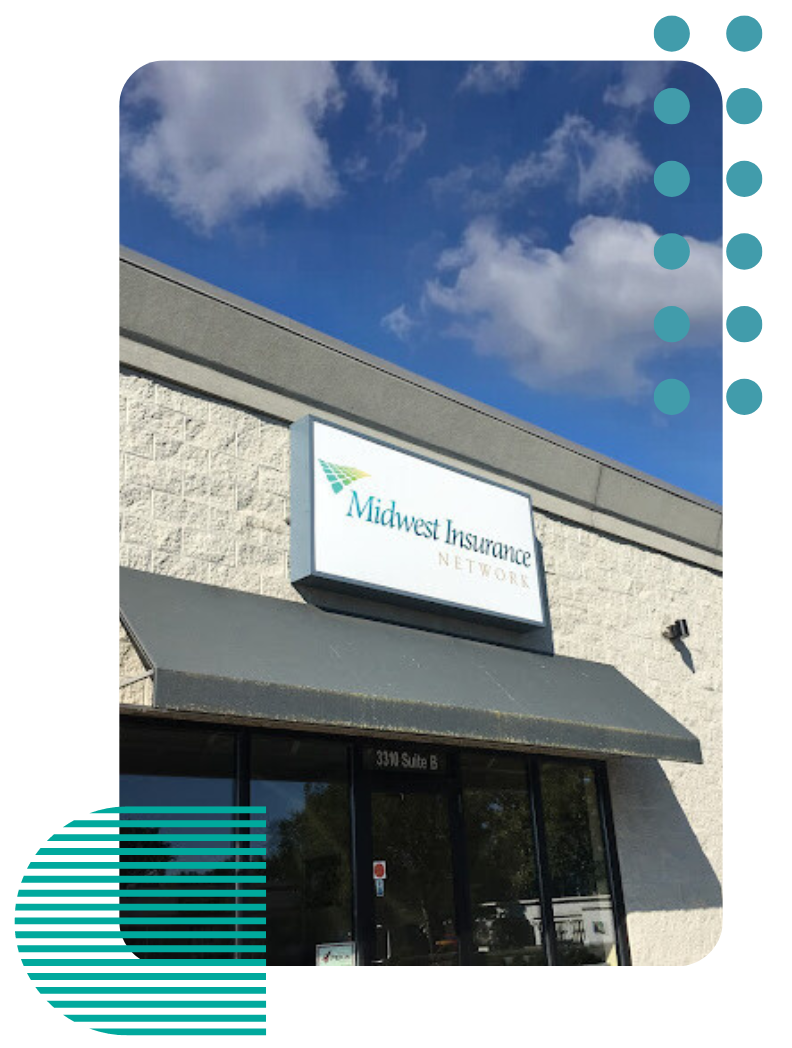Top 3 Recommended Policies
Index
Contact Us
Phone
agency@midwest-insure.com
Location
Northwood, OH
3310 Woodville Road, Suite D
Northwood, OH 43619
Elmore, OH
361 Rice Street
Elmore, OH 43416
Operating a food truck in Ohio offers a unique and exciting business opportunity, but it also comes with its own set of challenges—one of the most critical being insurance. With the food truck industry booming across the United States, and Ohio recently allowing food trucks to operate in rest areas, understanding the nuances of food truck insurance is essential for any entrepreneur looking to succeed in this space.
In this comprehensive guide, we’ll explore everything you need to know about food truck insurance in Ohio, including costs, coverage options, and recent regulatory changes that impact your business. Whether you’re just starting out or looking to update your current policy, this article will help you navigate the complexities of protecting your mobile food business.
For context, there are currently over
36,000 food trucks operating in the U.S., making it a highly competitive and rapidly growing market. Understanding your insurance needs is critical to staying compliant and safeguarding your investment.
Why Food Truck Insurance Is Crucial in Ohio
Food trucks face unique risks compared to traditional restaurants, including mobility-related hazards, equipment damage, and liability concerns from serving food in diverse locations. Ohio’s recent policy change allowing food trucks to operate in rest areas has opened new revenue streams but also introduces additional risks that insurance must cover. This newfound opportunity means food truck operators can tap into a steady flow of travelers and tourists, but it also means they must navigate the complexities of operating in high-traffic areas where accidents are more likely to occur.
Insurance protects your business from financial losses due to accidents, property damage, or legal claims. Without adequate coverage, a single incident could jeopardize your entire operation. For example, if your truck is involved in a collision or a customer claims food poisoning, insurance helps cover the costs of damages or legal fees. Additionally, food trucks often rely on specialized equipment, such as grills and fryers, which can be costly to repair or replace if damaged. Comprehensive insurance can mitigate these financial burdens, allowing business owners to focus on what they do best: serving delicious food.
Moreover, many cities and counties in Ohio require food trucks to carry specific insurance policies to obtain permits and operate legally. Ensuring compliance with these regulations helps avoid fines and business interruptions. Each municipality may have its own set of rules regarding insurance coverage, which can include general liability, vehicle insurance, and even workers' compensation if you have employees. Understanding these requirements is essential for smooth operations and can save food truck owners from unexpected legal troubles that could arise from non-compliance.
In addition to the legal aspects, having the right insurance can enhance your reputation among customers and vendors alike. When patrons see that you are insured, it instills a sense of trust and professionalism, making them more likely to choose your food truck over competitors. Furthermore, suppliers and event organizers often prefer working with insured vendors, as it reduces their own risk exposure. This can lead to more opportunities for partnerships and events, ultimately boosting your business's visibility and growth potential in Ohio's vibrant food truck scene.

Understanding the Types of Food Truck Insurance
Food truck insurance is not a one-size-fits-all product. It typically includes several types of coverage designed to address different risks:
- General Liability Insurance: Covers bodily injury and property damage claims from customers or third parties.
- Commercial Auto Insurance: Protects your food truck vehicle against accidents, theft, and damage.
- Property Insurance: Covers equipment, inventory, and the truck itself against damage or loss.
- Product Liability Insurance: Protects against claims related to foodborne illnesses or allergic reactions.
Workers’ Compensation: Required if you have employees, covering workplace injuries.
Choosing the right combination depends on your business size, menu, and operational locations. For example, if your truck operates in Ohio rest areas, you might need additional coverage for liability in those public spaces. Additionally, if you frequently participate in festivals or large events, considering event liability insurance can be crucial to protect against claims arising from large crowds or unique circumstances that may not be covered under standard policies.
According to Insuranceopedia, food truck insurance premiums in 2025 range from $250 to $400 per month, varying based on coverage type and other factors. This range helps set expectations for budgeting your insurance expenses. It's also worth noting that factors such as your driving history, the age of your truck, and even the type of cuisine you serve can influence your premiums. For instance, a food truck specializing in high-risk foods, such as raw seafood, may face higher insurance costs compared to one serving pre-packaged snacks.
Moreover, many food truck operators overlook the importance of having a comprehensive risk management strategy. This can include regular maintenance checks on the vehicle to prevent breakdowns, training staff on food safety protocols to minimize liability, and implementing safety measures to protect both employees and customers. By taking proactive steps, food truck owners can not only reduce their insurance costs over time but also enhance their reputation in the community as a responsible and reliable business. Understanding the nuances of food truck insurance is essential for navigating the complexities of this vibrant industry.
Cost Factors for Food Truck Insurance in Ohio
Several factors influence the cost of food truck insurance in Ohio. Understanding these can help you manage expenses without sacrificing coverage quality.
Truck Value and Equipment: The average purchase cost of a new food truck in 2025 is around $108,500, reflecting the investment you’re protecting. Higher-value trucks and specialized kitchen equipment typically lead to higher premiums. It's essential to consider not just the truck itself, but also the appliances, cooking tools, and any technology you may have installed, such as point-of-sale systems. Each of these components can significantly impact your overall insurance costs, as they contribute to the total value at risk.
Location and Parking: Operating in urban areas or popular rest stops can increase risk exposure. Parking fees in Ohio range from $300 to $1,000 per month depending on location, and some insurance providers factor parking security into their pricing. Moreover, high-traffic locations may also heighten the risk of accidents or theft, prompting insurers to adjust their rates accordingly. Understanding the local market and choosing a strategic location can not only boost your sales but also help in negotiating better insurance terms.
Coverage Limits and Deductibles: Higher coverage limits increase premiums, while higher deductibles can lower monthly costs but increase out-of-pocket expenses during claims. It's crucial to strike a balance between affordability and adequate protection, especially when considering potential liabilities that can arise from food safety issues or customer injuries. Consulting with an insurance agent who specializes in food trucks can provide tailored advice on the best coverage options for your specific needs.
Claims History and Experience: New operators may face higher premiums until they establish a clean claims record. Experienced food truck owners with no claims often benefit from discounts. This history not only reflects your operational reliability but also your commitment to safety and customer satisfaction. Additionally, participating in food truck associations or training programs can enhance your credibility and may lead to further discounts on your insurance premiums.
Furthermore, food truck operating costs rose by 7.8% in 2024, reflecting inflation and increased supply costs, which indirectly affect insurance pricing as well. For more detailed insights on operating costs,
The Restaurant HQ provides useful data on industry trends. Keeping abreast of these trends not only helps in budgeting but also in making informed decisions about insurance coverage and risk management strategies. As the food truck industry continues to evolve, staying informed can provide a competitive edge in both operations and financial planning.
Ohio-Specific Insurance Considerations
Ohio has unique regulations and opportunities that impact food truck insurance. One notable change during the COVID-19 crisis was the allowance for food trucks to operate in rest areas, expanding potential business locations but also increasing liability exposure.
This policy shift means that insurance policies must be tailored to cover operations in these new venues, which might not have been included in traditional coverage. Working with an insurance provider familiar with Ohio’s laws ensures your policy is compliant and comprehensive.
Moreover, Ohio’s state requirements for commercial auto insurance and liability coverage must be met to legally operate a food truck. Failing to meet these can result in fines or permit revocation.
In addition to the standard coverage, food truck operators in Ohio should consider the importance of product liability insurance. Given the nature of the food service industry, any claims related to foodborne illnesses or allergic reactions can lead to significant financial repercussions. This type of coverage protects against claims that may arise from the food served, ensuring that your business is safeguarded against unforeseen incidents that could tarnish your reputation and financial stability.
Furthermore, Ohio has a vibrant food truck community, with numerous festivals and events throughout the year that provide excellent opportunities for exposure and sales. However, participation in these events often requires additional insurance considerations, such as event liability coverage, which can protect your business from claims related to accidents or injuries that occur during these gatherings. Understanding the nuances of these requirements can help food truck owners maximize their opportunities while minimizing risks.
For more guidance on insuring food trucks specifically in Ohio,
Link-Hellmuth Insurance offers resources tailored to local business owners navigating these changes.

Tips for Choosing the Right Food Truck Insurance
Selecting the right insurance policy requires careful evaluation of your business needs and risk profile. Here are some tips to help you make an informed decision:
- Assess Your Risks: Consider your menu, locations, and equipment to identify potential liabilities.
- Compare Multiple Quotes: Insurance premiums vary widely; obtaining quotes from several providers ensures competitive pricing.
- Check Coverage Details: Understand what each policy covers and excludes, especially regarding product liability and vehicle use.
- Bundle Policies: Some insurers offer discounts if you combine general liability, commercial auto, and property insurance.
Review Annually: As your business grows or changes, update your coverage to avoid gaps.
Starting inventory costs for food trucks typically range between $2,000 and $3,000, so protecting this investment with adequate property insurance is vital. Being proactive about insurance can save you from costly surprises down the road.
Additionally, it’s essential to consider the unique aspects of your food truck operation. For instance, if you frequently participate in festivals or large events, you may need special coverage for those occasions. Event liability insurance can protect you from claims arising from incidents that occur during these gatherings, such as food-related illnesses or accidents involving your truck. Furthermore, understanding local regulations and requirements for food truck insurance can help you avoid fines and ensure compliance, which is crucial for maintaining your business's reputation.
Another important factor is the type of cuisine you serve. Certain foods may carry higher risks, such as those that require extensive cooking or handling of raw ingredients. If your menu includes items that are prone to spoilage or contamination, you might want to look into additional coverage options like spoilage insurance. This can safeguard your investment in perishable goods and provide peace of mind, allowing you to focus on delivering delicious meals to your customers without the constant worry of unforeseen losses.
Conclusion: Protecting Your Ohio Food Truck Business
Food truck insurance is a fundamental component of running a successful mobile food business in Ohio. With the industry growing rapidly and new operational freedoms like rest area vending, having the right insurance coverage safeguards your investment and ensures compliance with state regulations.
Costs for insurance vary but expect to budget between $250 and $400 monthly for comprehensive coverage. Factoring in other expenses such as parking, inventory, and truck purchase costs will give you a realistic view of your startup and operating budget.
By understanding the types of coverage available and the specific requirements in Ohio, food truck owners can make informed decisions that protect their business and allow them to focus on serving delicious food to their customers.
For further reading on food truck industry trends and costs,
Food Truck Profit offers valuable insights that complement this guide.




